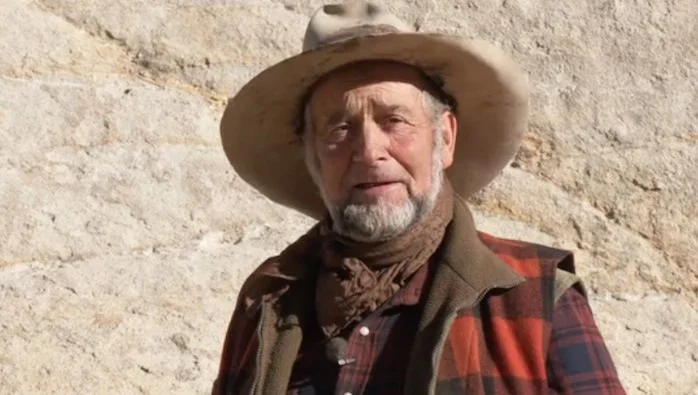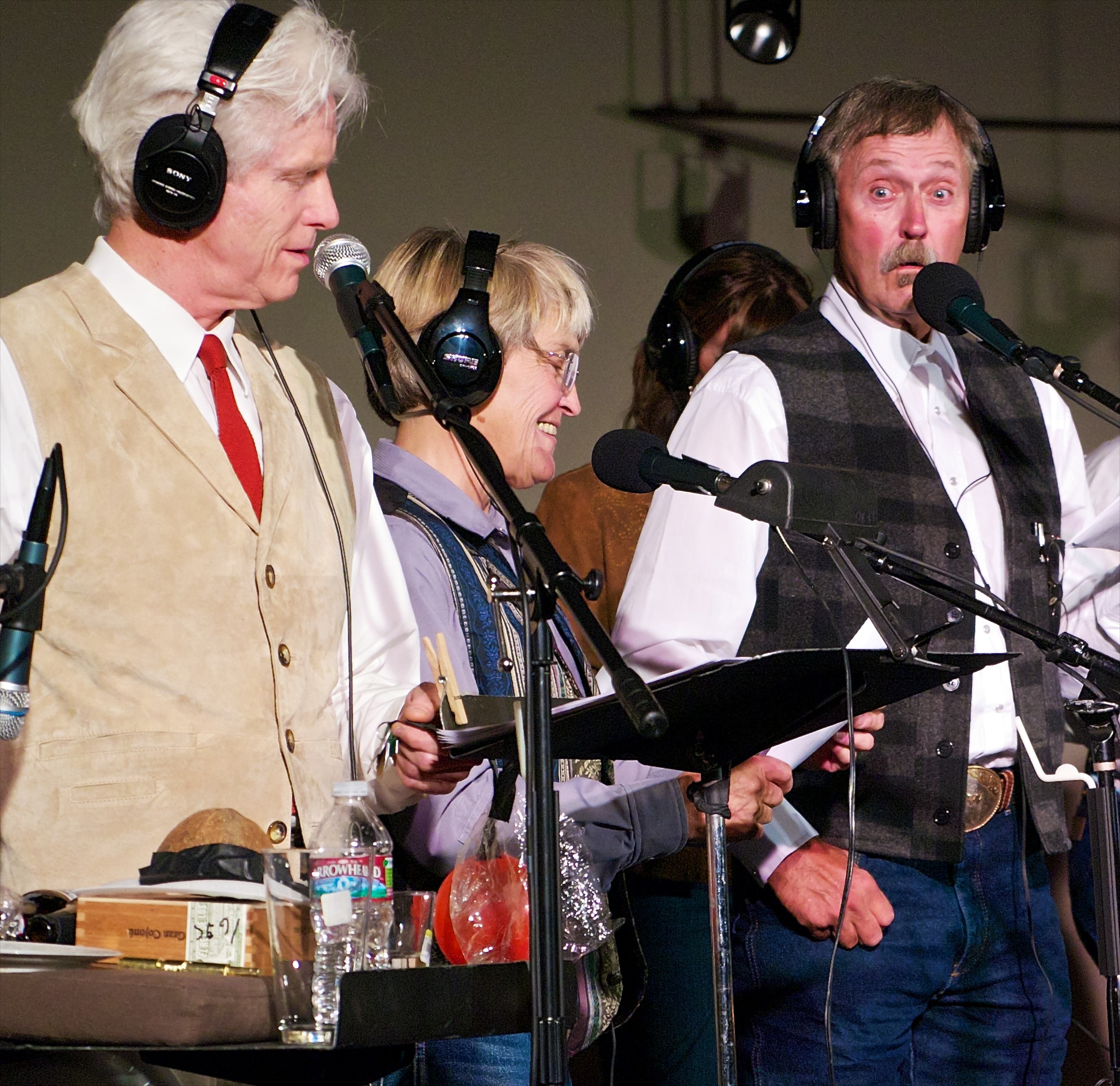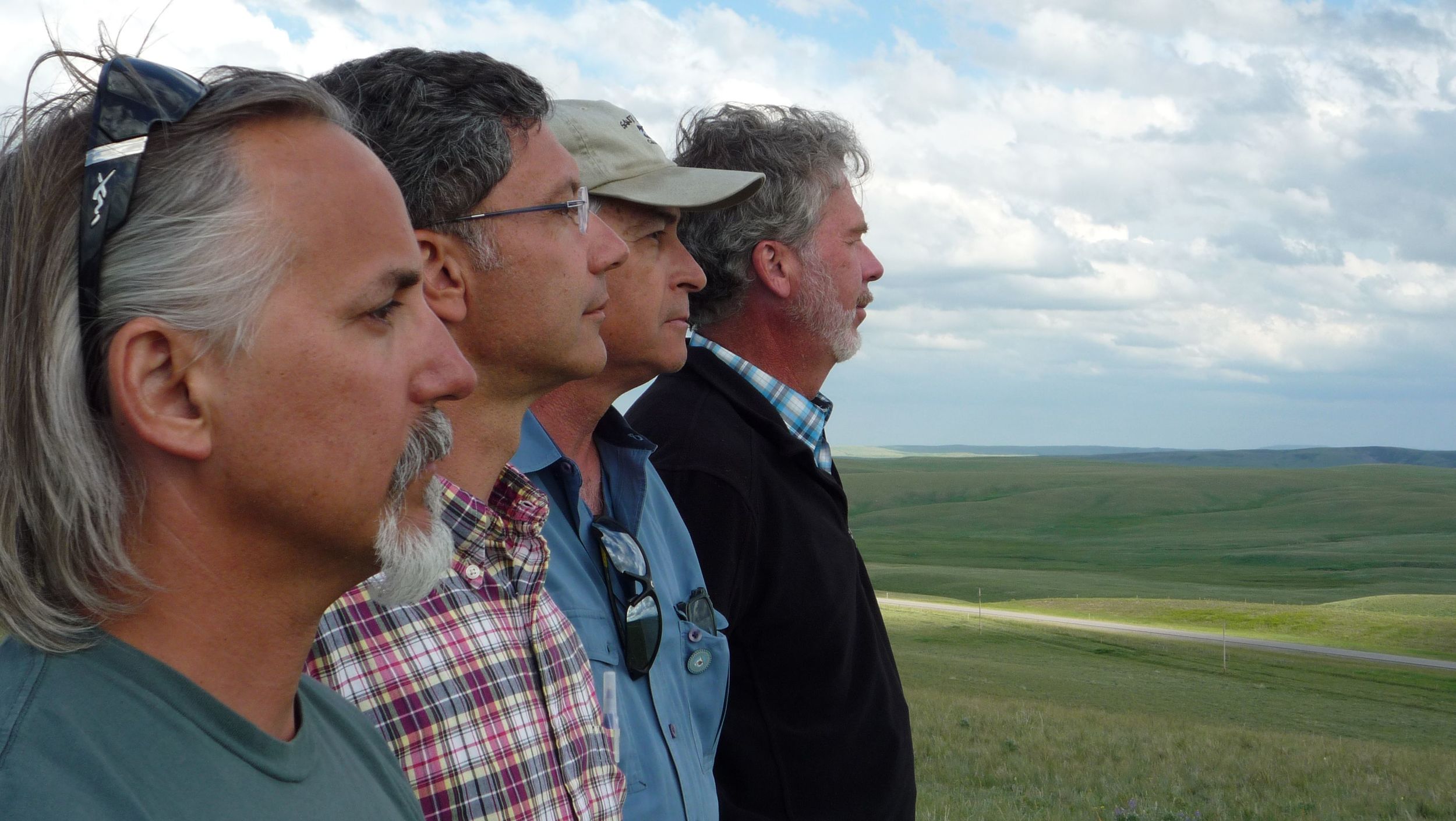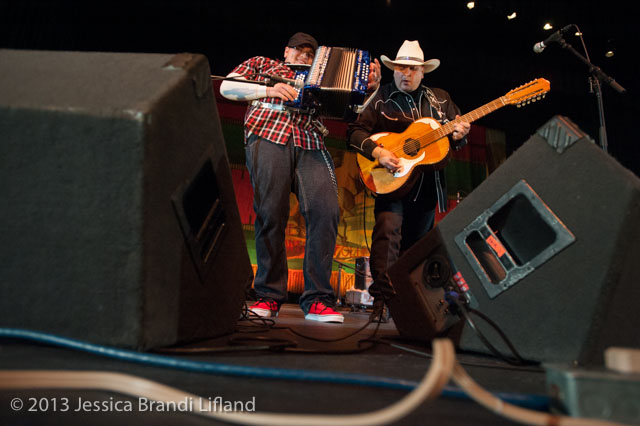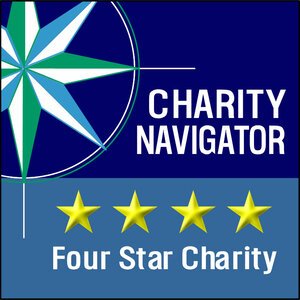The Trail’s End Ranch Radio Show is produced in the style of Prairie Home Companion and other radio shows of the old-style ilk. It is approachable for folks who are new to the cowboy poetry scene but has enough tooth to keep the veteran attendee interested as well. The show is highly entertaining to watch. I experienced the gambit of emotions—from laughing, to stomping my feet along to a great tune, to tearing up in sadness. It is worth the price of a ticket! And, there are still tickets available for the Friday 8:30 “airing” of the show at the National Cowboy Poetry Gathering, according to my inside source.
Written by singer-songwriter Stephanie Davis, the Trail’s End Ranch Radio Show features several vignettes, recitations from various famous cowboy poets, humorous faux ads and music played by the Trail’s End Ranch Hand Band. Fred Newman of Prairie Home Companion fame features prominently in the show. His table of sound-effects “instruments” includes a balloon to make alien sounds, glasses, beer bottles, a box of what sounded like aluminum recycling, a pair of old shoes and a roasting pan. I found myself wondering how he gets through TSA at the airport!
Poets DW Groethe, Henry Real Bird and Jerry Brooks are featured in the show. Groethe and Brooks even play characters in some of the skits. Groethe plays an alien with the assistance of a coffee can (you have to see it to believe it—its quite cool). Brooks plays a chuck-wagon gourmet well-versed in the preparation of roadkill. While Real Bird doesn't participate in any of the skits. he recites several of his poems, interlaced with his native Crow Indian language.
The opening act is a paean to bailing twine. As any ranch kid knows, bailing twine holds the world together, and according to the show's song, “is more useful than a ginzu knife at a Donner Party reunion.” Among other uses noted in the song are a leash for your pet lizard and a belt to hold your pants up. No matter what the problem, “the solution may be sitting on the dash of your truck…always carry bailing twine.”
There are multiple ads for made-up companies including Levitation Coffee for when you need to cowboy up, Western Brew Sarsaparilla with its natural mood enhancing agents, and a shady realty company that could take your ranch from cows to condos in 90 days or less.
Not all of the recitations are light-hearted. Brooks and Real Bird both recite poems that are emotionally and intellectually stimulating. All three of the poems are about love, but not in that sickening romantic comedy way. I think Henry Real Bird said it best: “love is there like a robin in the winter sky.”
The show is sponsored by the Interculture Foundation. Tickets available at westernfolklife.org.



